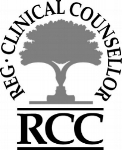Neurofeedback Treatment Of Sleep Disorders
Research Papers
The Treatment of Psychophysiologic Insomnia with Biofeedback: A Replication Study [abs.]
by Hauri PJ, Percy L, Hellekson C, Hartmann E, Russ D
ABSTRACT
To replicate a previous study, 16 psychophysiological insomniacs were randomly assigned to either Theta feedback or sensorimotor rhythm (SMR) feedback.
Related Research
EEG Slow (~1 Hz) Waves Are Associated With Nonstationarity of Thalamo-Cortical Sensory Processing in the Sleeping Human
by Massimini M, Rosanova M, Mariotti M
ABSTRACT
Intracellular studies reveal that, during slow wave sleep (SWS), the entire cortical network can swing rhythmically between extremely different microstates, ranging from wakefulness-like network activation to functional disconnection in the space of a few hundred milliseconds.
DC-EEG Discloses Prominent, Very Slow Activity Patterns During Sleep in Preterm Infants [abs.]
by Vanhatalo S, Tallgren P, Andersson S, Sainio K, Voipio J, Kaila K
ABSTRACT
The objective of this study is to test the hypothesis that the immature human brain exhibits slow electrical activity that is not detected by conventional (i.e. high-pass filtered) electroencephalography (EEG).

Recent Research
Mind over chatter: Plastic up-regulation of the fMRI salience network directly after EEG neurofeedback.
Ros T, Théberge J, Frewen PA, Kluetsch R, Densmore M, Calhoun VD, and Lanius RA
NeuroImage, 65, 2013, pp 324-35
Improving Visual Perception through Neurofeedback.
Scharnowski F, Hutton C, Josephs O, Weiskopf N, and Rees G
Journal of Neuroscience, 32, 2012, pp 17830-41
The effectiveness of neurofeedback training on EEG coherence and neuropsychological functions in children with reading disability.
Nazari MA, Mosanezhad E, Hashemi T, and Jahan A
Clinical EEG and Neuroscience, 43, 2012, pp 315-22
Self-regulation of brain oscillations as a treatment for aberrant brain connections in children with autism.
Pineda JA, Juavinett A, and Datko M
Medical Hypotheses, 79, 2012, pp 790-8
Evidence-based information on the clinical use of neurofeedback for ADHD.
Moriyama TS, Polanczyk G, Caye A, Banaschewski T, Brandeis D, and Rohde LA
Neurotherapeutics, 9, 2012, pp 588-98
Current status of neurofeedback for attention-deficit/hyperactivity disorder.
Lofthouse N, Arnold LE, and Hurt E
Current Psychiatry Reports, 14, 2012, pp 536-42
Individual alpha neurofeedback training effect on short term memory.
Nan W, Rodrigues JP, Ma J, Qu X, Wan F, Mak PI, Mak PU, Vai MI, and Rosa A
International Journal of Psychophysiology, 86, 2012, pp 83-7
Neurotherapy of traumatic brain injury/posttraumatic stress symptoms in OEF/OIF veterans.
Nelson DV, and Esty ML
Journal of Neuropsychiatry and Clinical Neurosciences, 24, 2012, pp 237-40
Schizophrenia and the efficacy of qEEG-guided neurofeedback treatment: a clinical case series.
Surmeli T, Ertem A, Eralp E, and Kos IH
Clinical EEG and Neuroscience, 43, 2012, pp 133-44
Which attention-deficit/hyperactivity disorder children will be improved through neurofeedback therapy?
Ahmadlou M, Rostami R, and Sadeghi V
Neuroscience Letters, 516, 2012, pp 156-60
Neurofeedback in children with ADHD: validation and challenges.
Gevensleben H, Rothenberger A, Moll GH, and Heinrich H
Expert Review of Neurotherapeutics, 12, 2012, pp 447-60
Taking back the brain: could neurofeedback training be effective for relieving distressing auditory verbal hallucinations in patients with schizophrenia?
McCarthy-Jones S
Schizophrenia Bulletin, 38, 2012, pp 678-82
A review of neurofeedback treatment for pediatric ADHD.
Lofthouse N, Arnold LE, Hersch S, Hurt E, and DeBeus R
Journal of Attention Disorders, 16, 2012, pp 351-72

